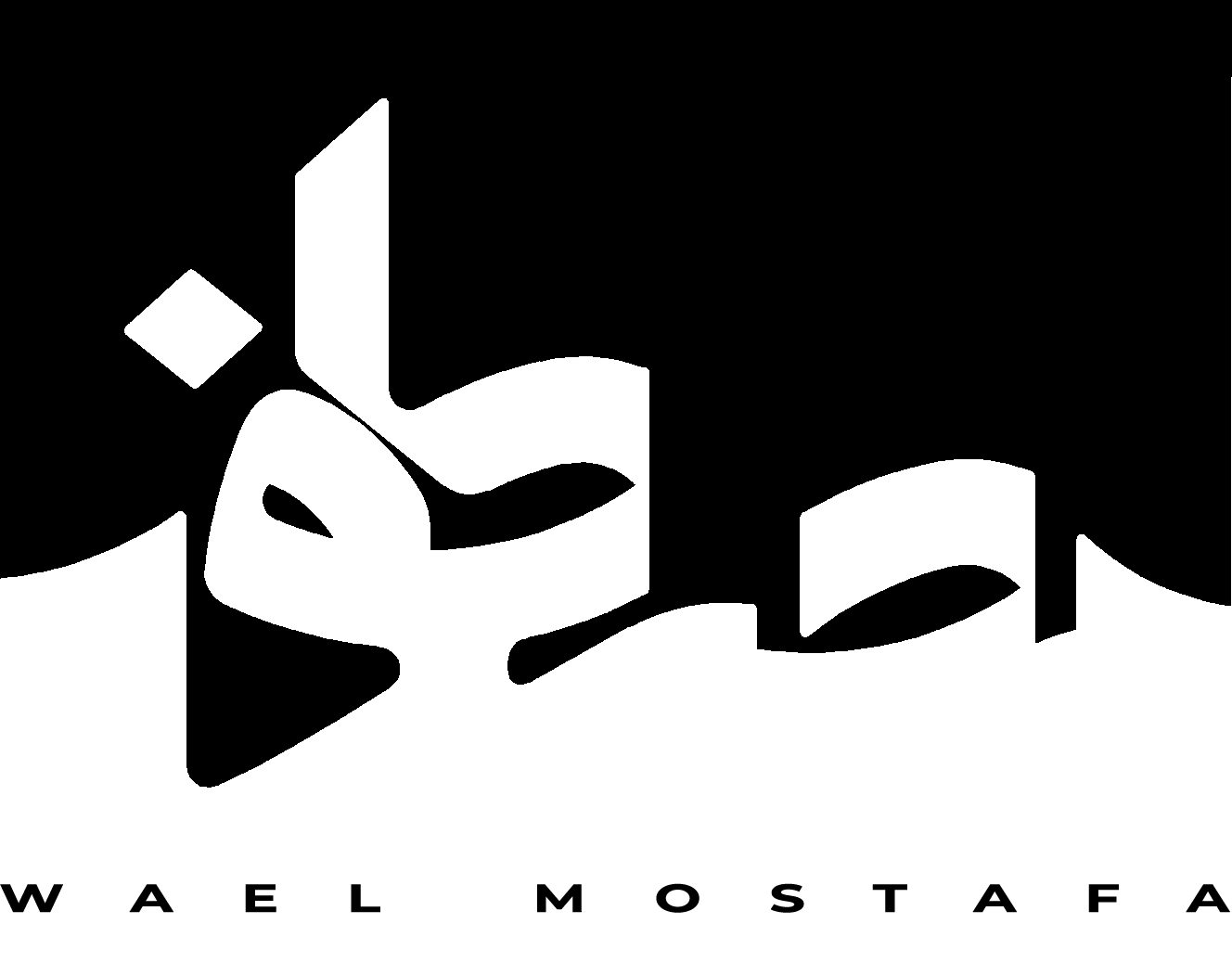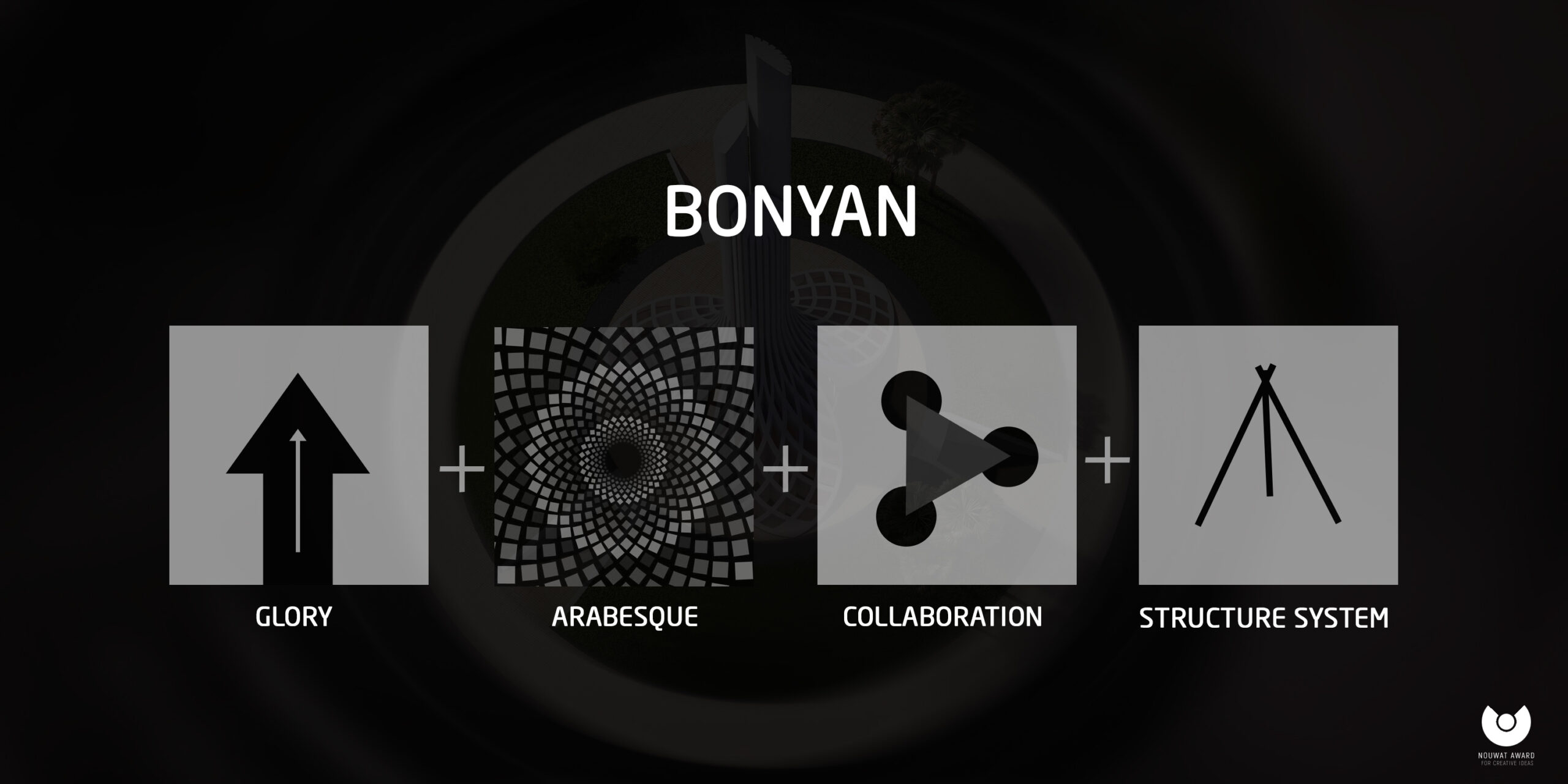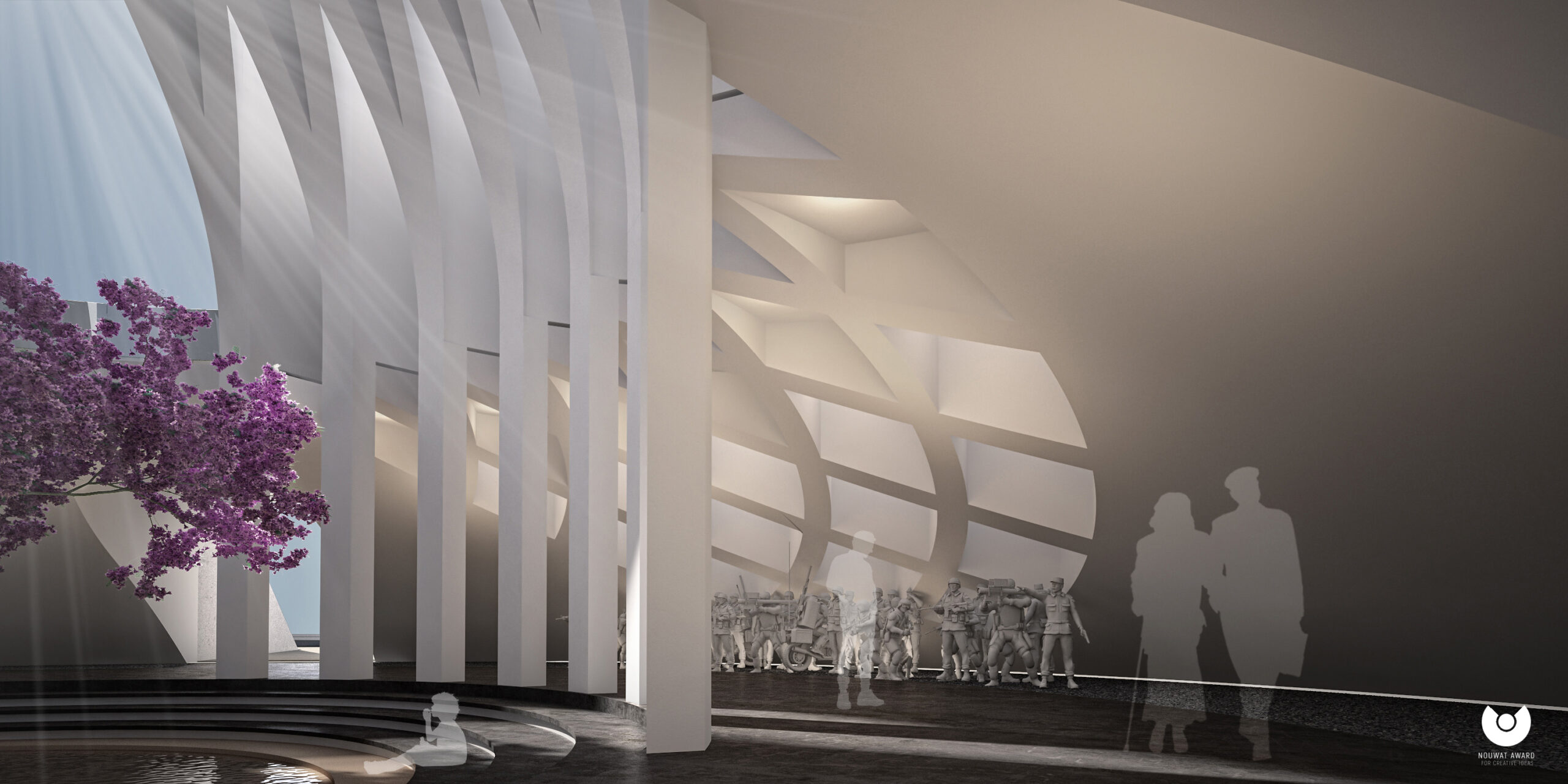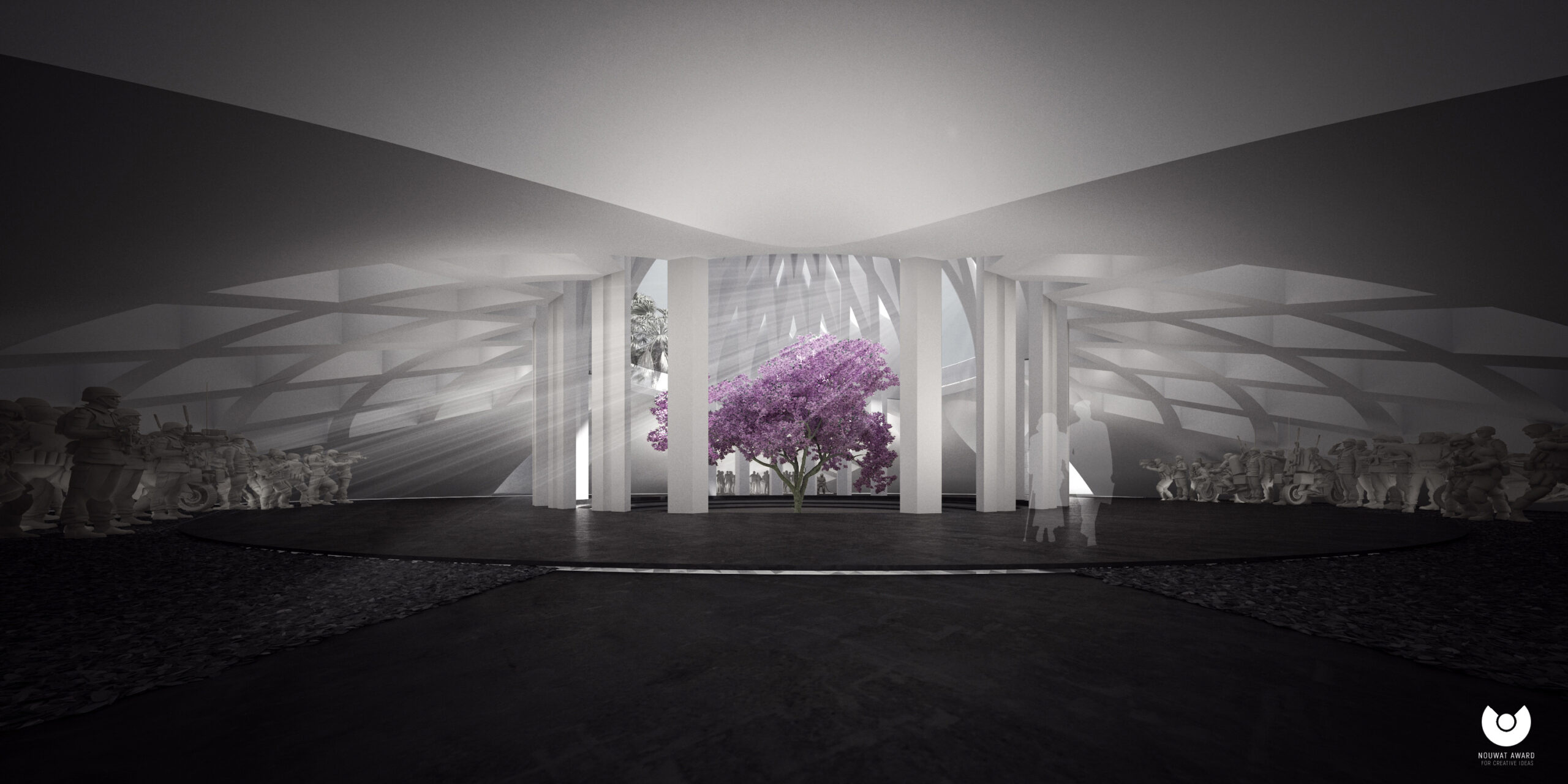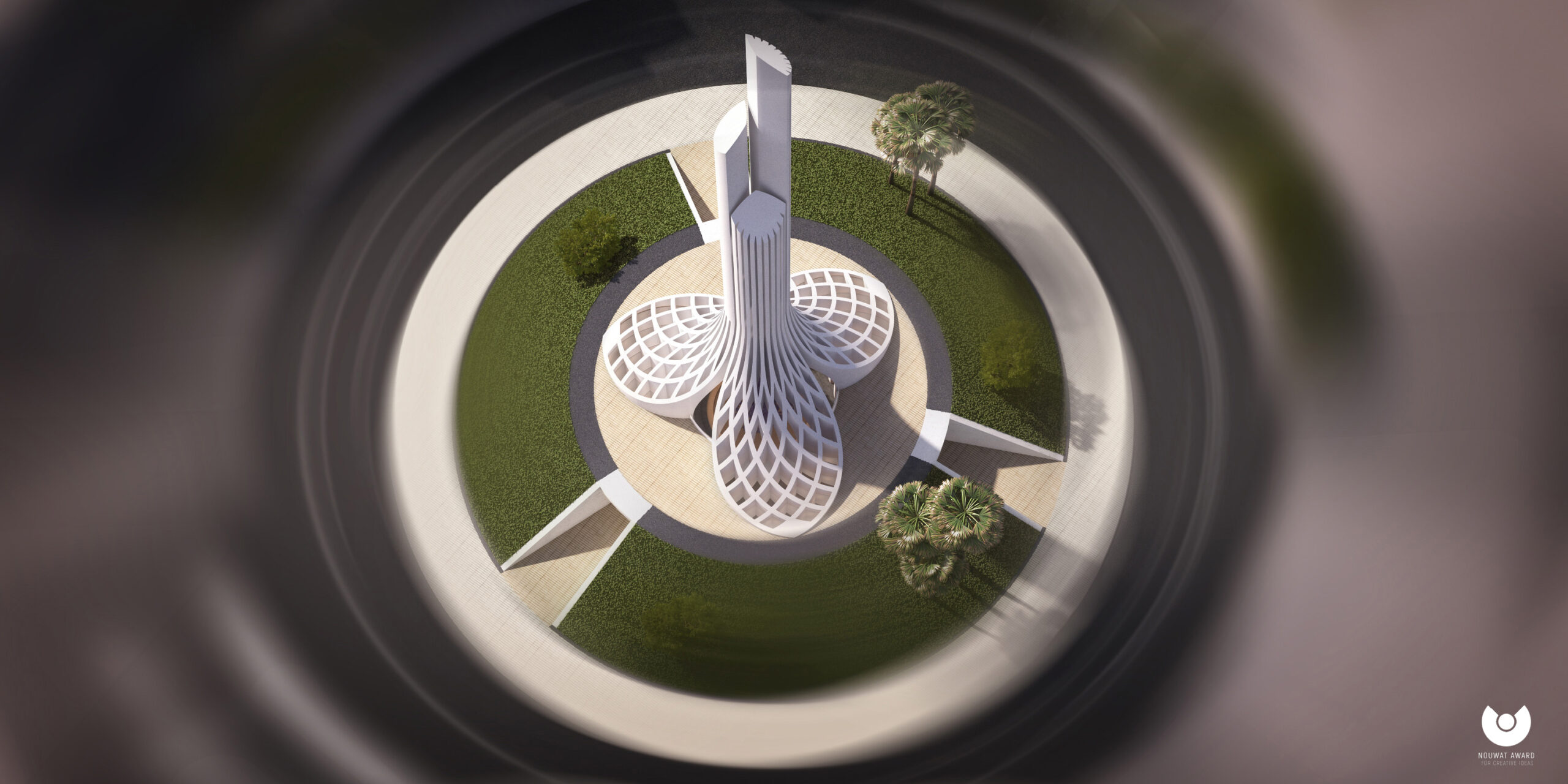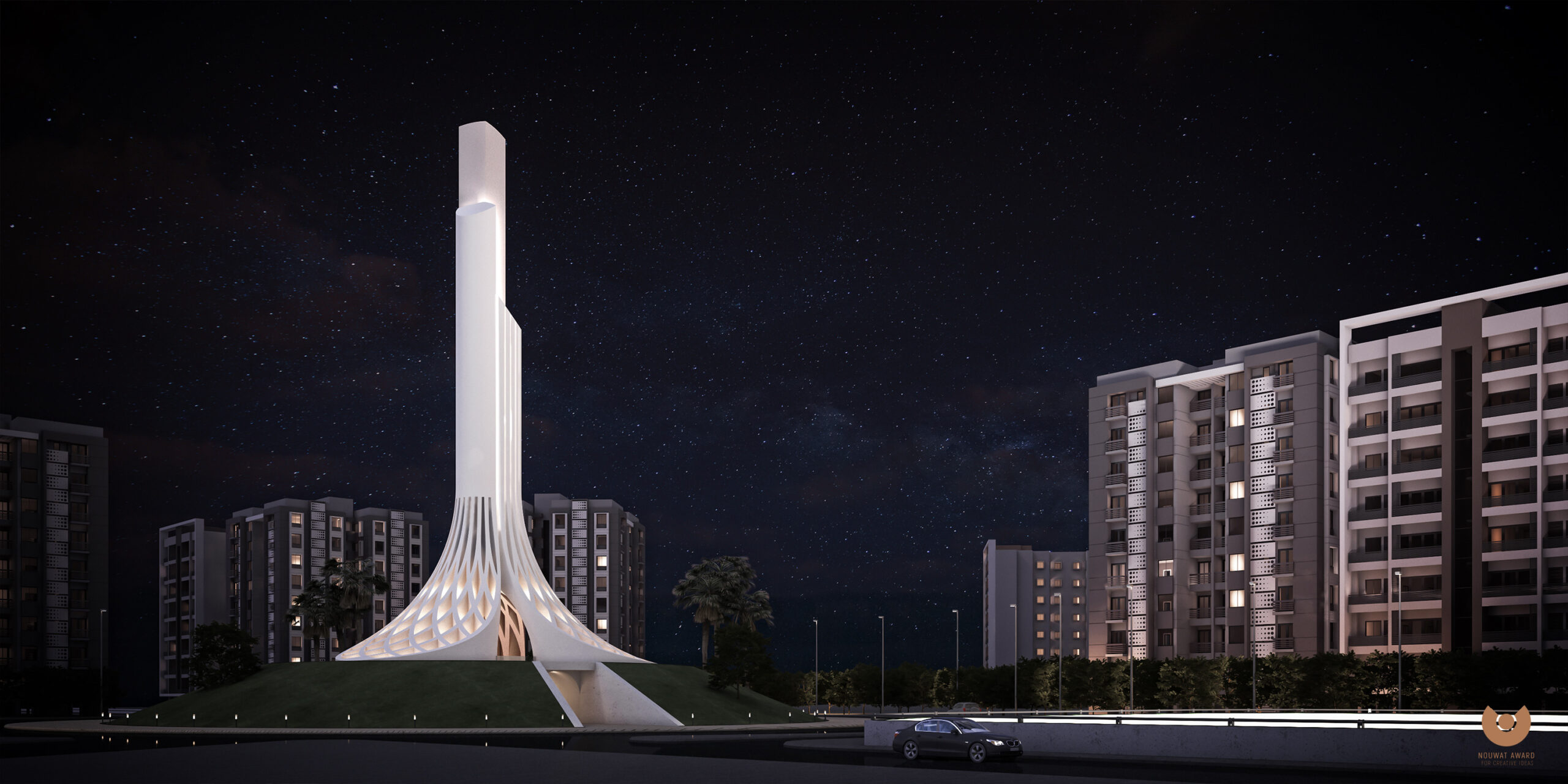
The resistance movements gained significant support from the Lebanese people, who saw them as defenders of their homeland and a symbol of resistance against foreign aggression. This support helped them to continue their fight against the Israeli forces, despite being outmatched in terms of military power and resources.
Bonyan is a memorial pavilion situated in the southern suburbs of Beirut, Lebanon. Its purpose is to honor the “golden collaboration” among the Lebanese people, army, and resistance movement during the Lebanese and Israeli conflict. The pavilion showcases a collection of photographs and artifacts that document the history of the struggle and the part played by various groups in the resistance.
The design of Bonyan draws inspiration from Islamic architecture, characterized by its intricate geometric patterns and calligraphy that embellish the walls and ceilings.
Bonyan serves as a representation of solidarity and collaboration among the Lebanese people during a time of unrest and adversity. It is also an example of how architecture can be employed to communicate powerful messages and evoke deep emotions.
During the Israeli invasions and attacks on Lebanon, various Lebanese groups and factions, including the Lebanese army and resistance groups, fought back against the Israeli forces.
The Lebanese army, though relatively small and poorly equipped, fought alongside the resistance groups in defense of the country. The resistance groups, including Hezbollah and other groups, employed guerrilla tactics and hit-and-run attacks against Israeli forces, primarily targeting their supply lines and logistical infrastructure.
The resistance groups also launched rocket attacks into Israel, causing significant damage and casualties. Additionally, they employed various tactics to resist the Israeli occupation of Lebanese territory, including sabotage, ambushes, and kidnappings.
The resistance movements gained significant support from the Lebanese people, who saw them as defenders of their homeland and a symbol of resistance against foreign aggression. This support helped them to continue their fight against the Israeli forces, despite being outmatched in terms of military power and resources.
